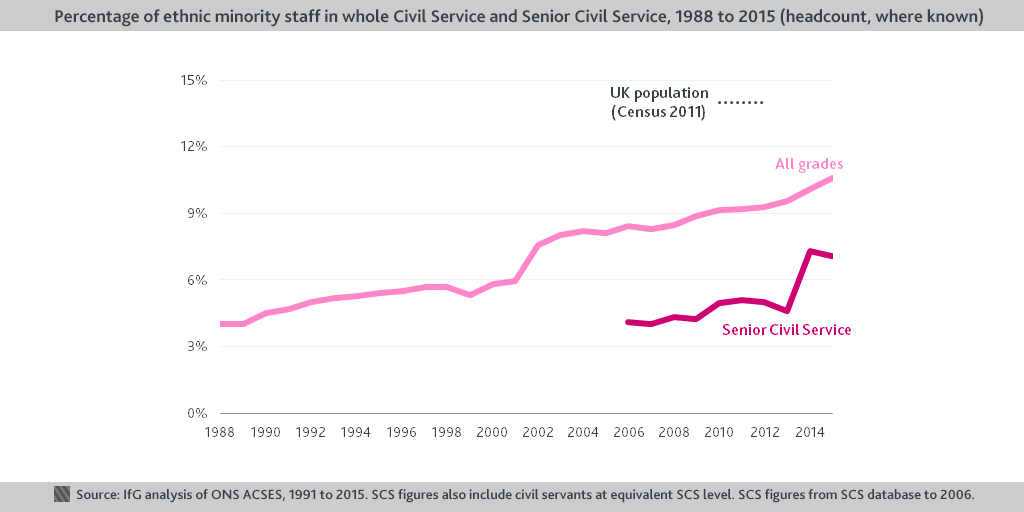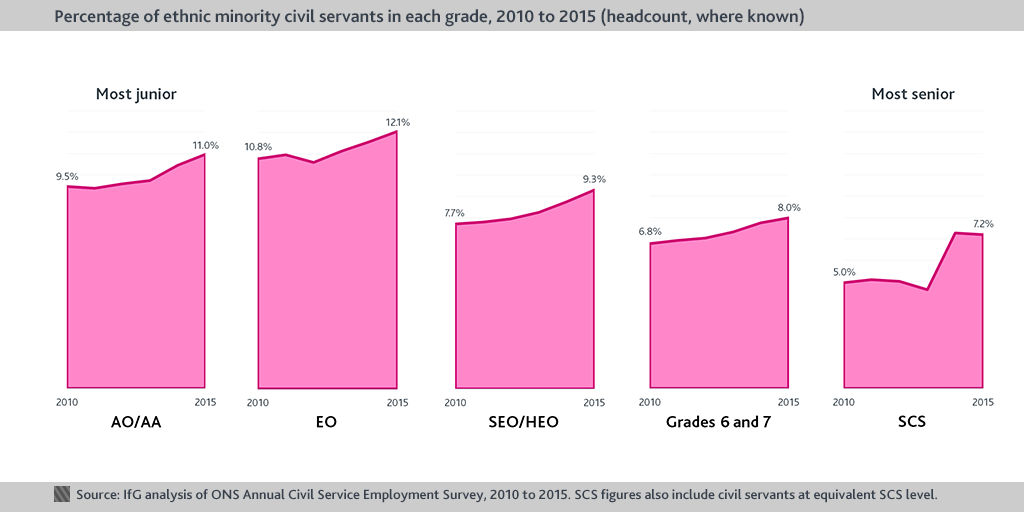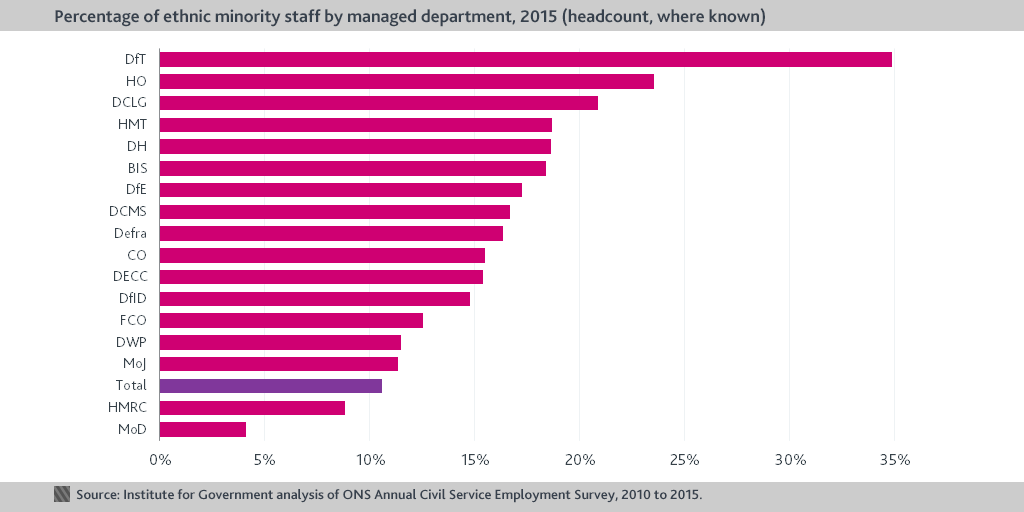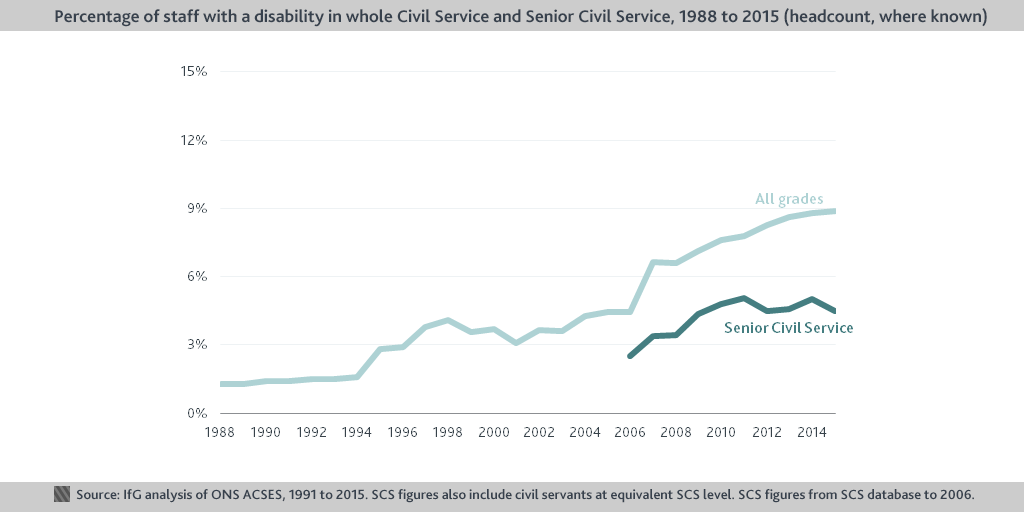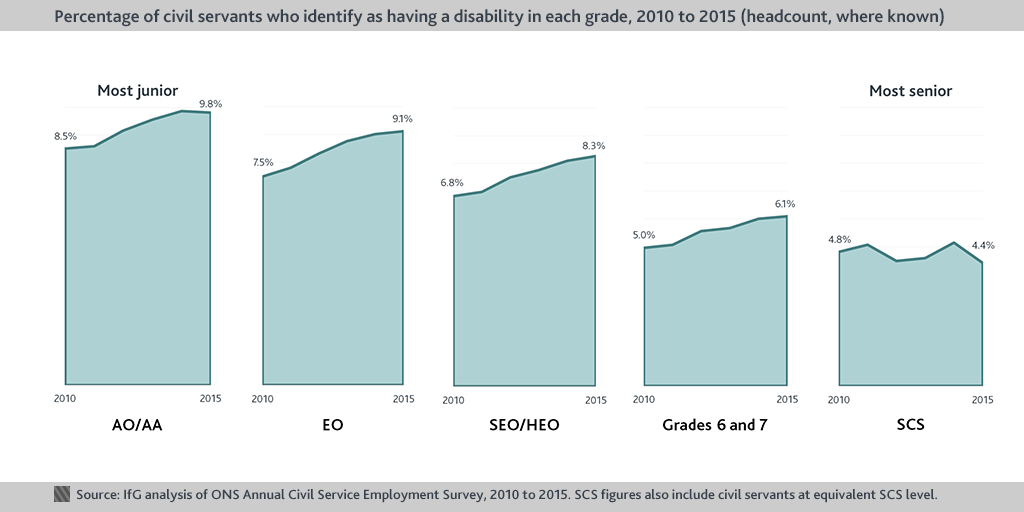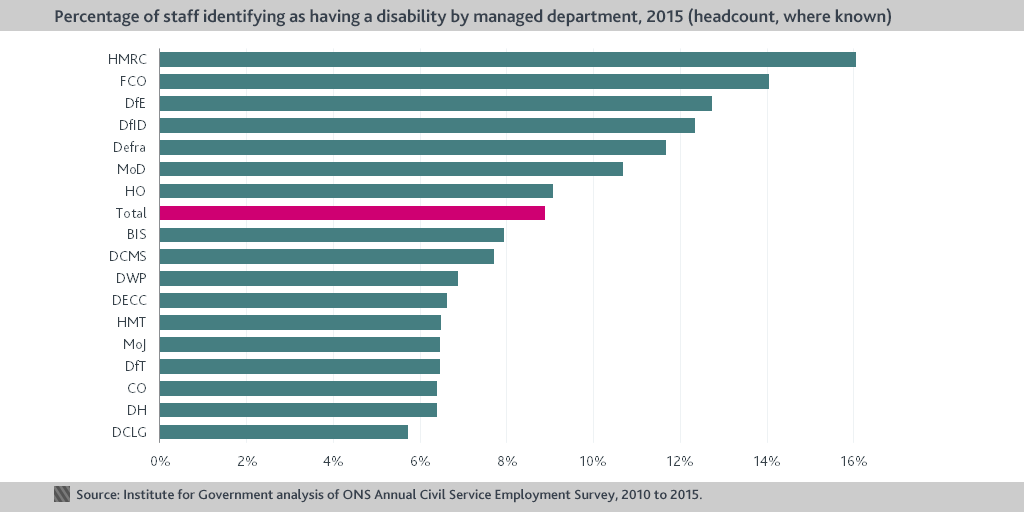The Civil Service has been trying to become a more diverse organisation, and to improve opportunities for those from currently under-represented backgrounds. How is it doing? Ollie Hirst examines the latest data on ethnicity and disability employment rates within Whitehall.
“There is a way to go… on women, but even more so I’d say on BMEs and disabilities.” This was Cabinet Secretary and Head of the Civil Service Sir Jeremy Heywood’s comment on Whitehall’s diversity track record when he spoke at the Institute for Government last year.
The primary response to this challenge has been the Civil Service Talent Action Plan, which aims to remove barriers to success for talented civil servants from under-represented backgrounds. The recent focus has been on three main groups of staff: ‘those declaring a Black, Asian or Minority Ethnic (BAME) background, those declaring a disability or health condition, and those who identify as lesbian, gay, bisexual or transgender (LGBT).’
While data on the last of these groups remains particularly limited, the latest Civil Service Employment Survey offers the opportunity to chart how well departments are doing in increasing their representation of minority ethnic and disabled staff. However, even here the status of many civil servants is unknown – all of the percentages given below are the percentage of staff where ethnicity and disability status are known.
11% of civil servants identify as coming from a minority ethnic background.
11% of the whole Civil Service was from an minority ethnic background in 2015, compared with 9% in 2010 and just 4% in 1988. This is still less than the proportion of the general UK population that is from an ethnic minority, which was 14% at the 2011 census. There is also a gap between the percentage of the whole Civil Service from a BAME background and that of the Senior Civil Service (SCS): at 7.2% in 2015, this remains significantly lower than the Civil Service as a whole.
The Government has reviewed recruitment practices that can act as barriers to some groups – and moved to name-blind recruitment as a default practice. However, as Richard Heaton, Permanent Secretary at the Ministry of Justice and Civil Service Race Champion, recently suggested, further progress on inclusion and diversity may also require a deeper culture change in Whitehall.
The proportion of minority ethnic staff is lower at more senior grades.
Non-senior grades – Administrative Officer/Administrative Assistant (AO/AA), Executive Officer (EO), and Senior Executive Officer/Higher Executive Officer (SEO/HEO) – have the highest percentages of BAME employees in their workforces, and have seen the most consistent increases over the past five years. Although the proportion of SCS from an ethnic minority in 2015 has increased by over two percentage points since 2010, this followed a dramatic rise between 2013 and 2014, and has now plateaued.
DfT and HO have the highest proportion of staff from a BAME background, while only 4% of MoD employees are from an ethnic minority.
DfT is the department with the largest percentage of its staff from a minority ethnic background (35%), and has also seen the greatest increase in the past five years, more than doubling from 15% in 2010. At the other end of the spectrum, BAME civil servants at MoD constitute only 4% of staff, the lowest proportion across all government departments.
9% of civil servants identify as having a disability, but the Senior Civil Service has only half this percentage.
In 2015, about 9% of all civil servants identify as having a disability. Again, this figure has risen since 2010 (7.6%); it has increased dramatically since 1988 (1.3%). However, the percentage of SCS with a disability is lower than across the Civil Service as a whole – 4.5% in 2015.
The percentage of disabled staff has increased steadily in most grades since 2010, but has decreased in the Senior Civil Service.
Civil servants with disabilities make up a larger proportion of the workforce at the more junior grades: 9.8% of those at AO/AA grade and 9.1% of EO staff identify as having a disability.
Although one of the proposals in the refreshed Action Plan was the introduction of an ambitious new talent programme for the SCS – Accelerate – with the aim of offering leadership training and development to produce a larger pool of diverse talent, any effect of this initiative on disability at the most senior grade is yet to be felt. In fact, as with minority ethnic SCS, the proportion of senior civil servants identifying as disabled has slightly decreased in the last year, from 5.2% in 2014 to 4.4% in 2015.
HMRC is the department with the highest percentage of disabled staff while DCLG, DH and CO have the lowest.
Lin Homer, the Permanent Secretary of HMRC, who served as the Civil Service Disability Champion for most of the last parliament, currently leads the department with the largest proportion of disabled civil servants in its workforce (16%). In comparison, only around 6% of civil servants in DCLG identify as disabled.
The new Chief People Officer in Whitehall, Rupert McNeil, has set out his vision for the Civil Service to be a role-model employer in the UK when it comes to diversity and inclusion, welcoming and championing staff from different backgrounds. While it is important to get the facts straight about diversity in the Civil Service, it is only useful if it is part of a sustained effort to make improvements. As a recent report from the National Audit Office (NAO) argued, the Cabinet Office – which has overall responsibility for the development and implementation of the Talent Action Plan – is not ‘using the data to its full potential to inform the Plan, manage workforce changes or to hold departments to account.’ We continue to encourage the Government to publish high-quality data that departments are willing and able to use themselves.
Abbreviations for government departments can be found here. This post was updated in April 2016 to clarify that all percentages used are where the ethnicity or disability status has been reported.
- Topic
- Civil service
